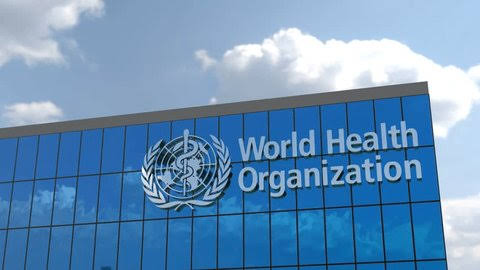As the world continues to navigate the evolving landscape of the COVID-19 pandemic, a new variant has emerged on the global stage, raising eyebrows and prompting swift action from health authorities. The World Health Organization (WHO) has officially classified NB.1.8.1, a subvariant of the Omicron lineage, as a “variant under monitoring” due to its rapid spread across at least 23 countries. First detected in China in January 2025, NB.1.8.1 has quickly gained traction, now accounting for approximately 10-11% of global SARS-CoV-2 sequences. With cases spiking in regions like the United States, China, Hong Kong, Southeast Asia, Europe, and the Western Pacific, this variant is proving to be a formidable player in the ongoing battle against COVID-19. But what makes NB.1.8.1 unique, and should we be worried? Let’s dive into the details.
A New Contender in the Omicron Family
NB.1.8.1 is the latest in a long line of Omicron subvariants that have kept scientists and health officials on their toes since the variant first emerged in late 2021. Descended from the highly transmissible Omicron lineage, NB.1.8.1 has mutations in its spike protein that make it particularly adept at binding to human cells. According to early research, these mutations render NB.1.8.1 approximately 1.5 times less susceptible to neutralization by antibodies generated from vaccination or prior infection. In simpler terms, this variant has a knack for slipping past some of the immune defenses we’ve built up over the years, making it more likely to cause infections even in vaccinated or previously infected individuals.
Despite its immune-evasive properties, there’s a silver lining: NB.1.8.1 does not appear to cause more severe illness than other Omicron subvariants. The WHO and global health experts have emphasized that, based on current data, the variant’s symptoms are largely consistent with what we’ve come to expect from COVID-19—sore throat, fatigue, fever, mild cough, muscle aches, nasal congestion, and, in some cases, gastrointestinal issues or hoarseness. For most people, particularly those who are vaccinated or in good health, NB.1.8.1 is unlikely to lead to serious outcomes. However, its high transmissibility means it’s spreading quickly, and vulnerable populations—such as the elderly, immunocompromised, and those with underlying health conditions—remain at higher risk.
A Global Snapshot
Since its discovery in China earlier this year, NB.1.8.1 has made its presence felt across the globe. In Hong Kong, the variant has fueled a surge in COVID-19 cases, pushing infection rates to a 12-month high and increasing hospitalizations. China, where the variant was first identified, is also seeing a rise in cases, particularly in urban centers. In Southeast Asia, Europe, and the Western Pacific, NB.1.8.1 is gaining ground, with wastewater surveillance in places like Perth, Australia, confirming its growing prevalence.
In the United States, the variant is still in its early stages but is already causing concern. As of May 27, 2025, fewer than 20 cases have been reported, primarily detected through airport screening in states like California, Washington, New York, Ohio, and Rhode Island. While these numbers are small, the variant’s rapid spread elsewhere suggests it could soon become a significant contributor to the U.S. case count. The Centers for Disease Control and Prevention (CDC) is closely monitoring the situation, particularly as NB.1.8.1 appears to be outpacing the currently dominant LP.8.1 variant in some regions.
Why NB.1.8.1 Is a Cause for Concern
What sets NB.1.8.1 apart is its enhanced transmissibility. Scientists estimate that it spreads more efficiently than LP.8.1, which has been the dominant strain in many parts of the world. This increased infectiousness is likely due to the aforementioned spike protein mutations, which allow the virus to latch onto human cells more effectively. In practical terms, this means NB.1.8.1 can spread more easily in crowded settings, making public health measures like mask-wearing and good ventilation as relevant as ever.
The variant’s ability to partially evade immunity is another red flag. While vaccines remain highly effective at preventing severe disease, hospitalization, and death, NB.1.8.1’s immune-evasive properties may reduce their ability to prevent infection altogether. This doesn’t mean vaccines are ineffective—far from it. Current vaccines, including the latest boosters tailored to Omicron subvariants, are still expected to provide robust protection against severe outcomes. However, breakthrough infections may become more common as NB.1.8.1 spreads, particularly among those who haven’t received a recent booster.
The U.S. Context
The emergence of NB.1.8.1 in the United States comes at a time of significant change in the nation’s COVID-19 strategy. Under the leadership of Health and Human Services Secretary Robert F. Kennedy Jr., the U.S. has seen controversial shifts in vaccine policy. Notably, the CDC recently removed recommendations for COVID-19 vaccination for healthy children and pregnant women, a decision that has sparked debate among public health experts. Critics argue that this move could leave vulnerable populations more exposed, especially as new variants like NB.1.8.1 gain traction. Supporters, however, contend that the policy reflects a focus on high-risk groups and individual choice.
These policy changes add complexity to the response to NB.1.8.1. With fewer cases reported in the U.S. so far, the variant hasn’t yet triggered widespread alarm, but experts are urging caution. Airport screening programs have been instrumental in identifying early cases, and wastewater surveillance is providing valuable data on the variant’s spread. As colder weather approaches and people spend more time indoors, conditions could favor further transmission, making vigilance critical.
What This Means for You
For the average person, NB.1.8.1 doesn’t necessitate panic, but it does call for renewed attention to basic precautions. The WHO has assessed the global public health risk of NB.1.8.1 as low, but its rapid spread underscores the importance of staying proactive. Here are some steps you can take to protect yourself and others:
-
Stay Up-to-Date on Vaccinations: If you haven’t received a COVID-19 booster recently, consider getting one, especially if you’re in a high-risk group. Vaccines remain the best defense against severe outcomes.
-
Practice Good Hygiene: Regular handwashing, covering coughs and sneezes, and avoiding touching your face can go a long way in reducing transmission.
-
Monitor Symptoms: If you develop symptoms like sore throat, fever, or fatigue, test for COVID-19 and isolate if positive. Early detection can help prevent spread to others.
-
Consider Masks in High-Risk Settings: In crowded indoor spaces or areas with high case counts, wearing a well-fitting mask can provide an extra layer of protection.
-
Stay Informed: Keep an eye on updates from trusted sources like the WHO, CDC, or local health authorities for the latest guidance.
For high-risk individuals, such as older adults or those with chronic conditions, extra caution is warranted. Consulting with a healthcare provider about vaccination status and additional precautions can help mitigate risks.
Looking Ahead
While NB.1.8.1 isn’t a cause for alarm, its rapid spread serves as a reminder that COVID-19 remains a dynamic and unpredictable challenge. The WHO’s decision to classify it as a variant under monitoring reflects the need for ongoing surveillance and research to understand its full impact. Scientists are working to gather more data on its transmissibility, severity, and vaccine escape potential, which will inform future public health strategies.
In the meantime, the global community is once again tasked with balancing caution and resilience. The tools to manage NB.1.8.1—vaccines, testing, and public health measures—are well-established, but their success depends on collective action. As we head into the latter half of 2025, staying informed and proactive will be key to keeping this latest variant in check.
For the latest updates on NB.1.8.1 and COVID-19, visit the WHO website at www.who.int or the CDC at www.cdc.gov. Stay safe, stay informed, and let’s keep working together to navigate this ever-evolving pandemic.
Join our Whatsapp channel to stay updated always!


